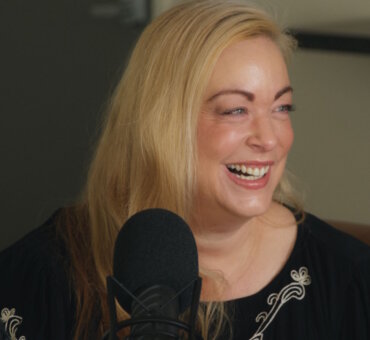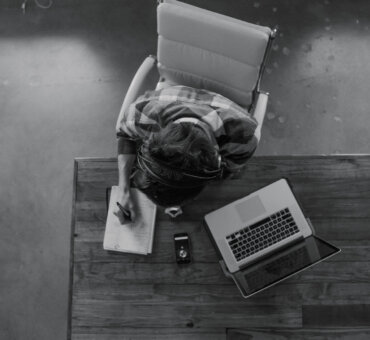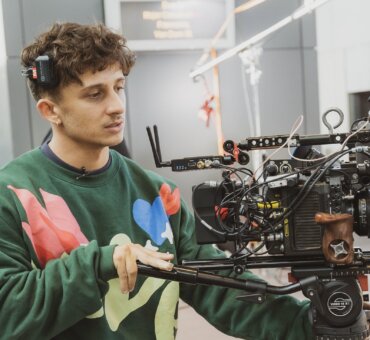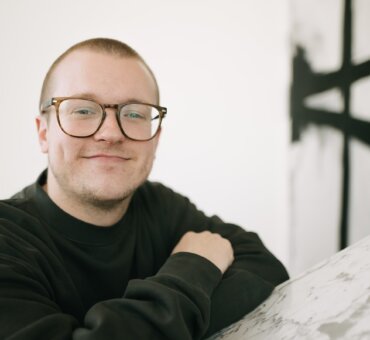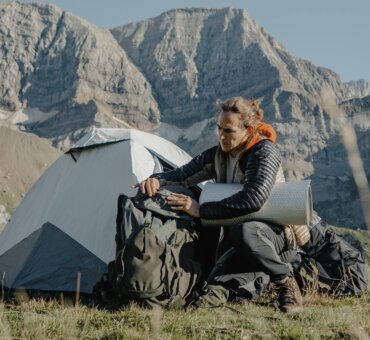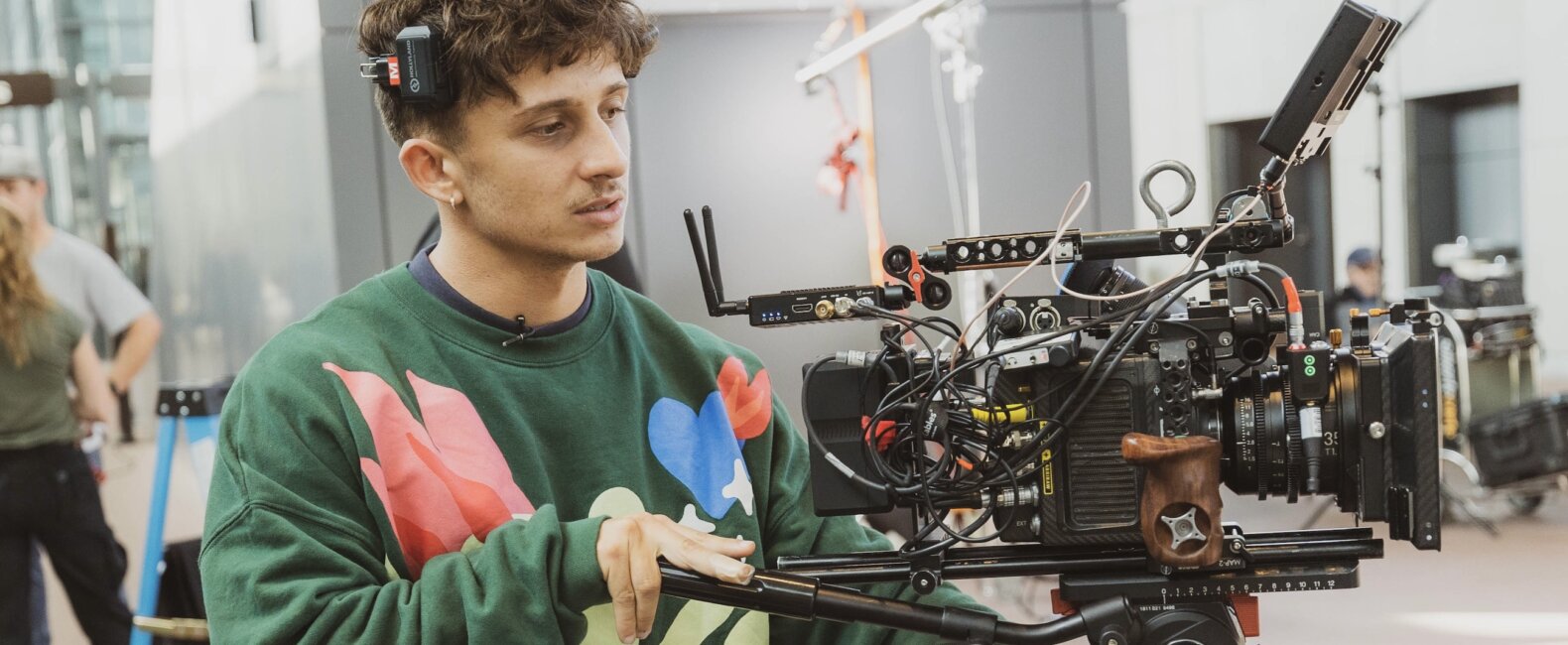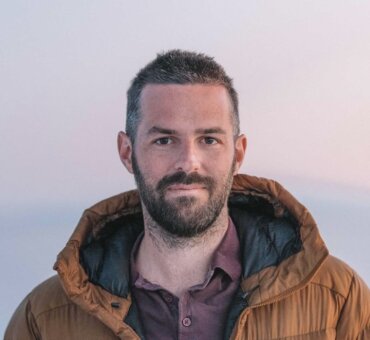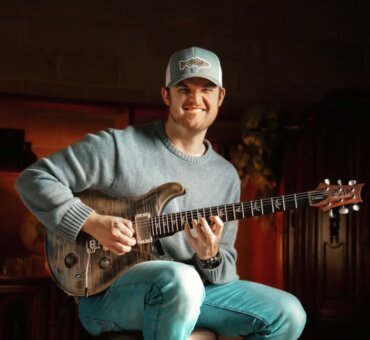When cinematographer Carlo Stigliano isn’t creating stunning films and branded content for brands like Netflix, Door Dash, and Puma, the Philadephia-based filmmaker is chatting with other creatives on his podcast, the Creative Gap. Read more about what keeps him motivated to create, his advice to new filmmakers, and how he uses Musicbed to find the right music for his films.
Musicbed: What sparked your passion for filmmaking/storytelling?
Carlo Stigliano: This might be a long response. When I was 18 I started a clothing company, right out of high school, going into my freshman year of college. At the time, I was studying music production and audio engineering. By then, I had been a producer and DJ for about three years. The clothing business is really when I got my hands on a camera for the first time. I couldn’t afford someone to shoot it regularly, but I could afford a NIkon D3300. I remember going into the woods near my house with my girlfriend, now fiancé, and taking photos of her in the snow. The photos weren’t good at all. But I did some of my own product shoots and a small video for it.
Fast forward about a year later, I shut down the business due to a legal issue but found myself carrying the camera around more regularly and taking photos of my friends. Fast forward again to middle of sophomore year of college, I dropped out and became a pizza delivery guy and a landscaper. I worked everyday 12 hours a day, but I always had a drive and determination to catch the sunset after each day at the beach with a few of my friends. It was like a ritual. After a day of landscaping I would unwind at the beach with my camera.
I started sharing some of my photos on Instagram and my cousin introduced me to his two friends who owned a production company in NJ, specializing in drone work and real estate content. They truly taught me all the basics and got me hooked into seeing this hobby as a viable career path and tool to make money. After interning and working for them, I started my own production company where I managed to get clients like pizzerias, tattoo shops, dentist offices, etc.—mainly a retainer client business model. And with the videographer mindset, I had no knowledge of the traditional film world. No idea there were roles on set—just completely ignorant to that side of the business, until I saw my mentor Danny Gevirtz on YouTube talking about cinematography. And as soon as I understand what a cinematographer does, I knew instantly it was what I want to work towards. And I did—ever since that day I have dedicated everything to becoming the best DP I can.
During COVID, my best friend and I would get together at least 2-3 times a week and I would film him and practice lighting techniques—anything I could to literally just practice. And he isn’t even in this industry—he was just super motivated to help me. This was also the time I started my YouTube channel. Obviously at that time I wasn’t a real DP, but I acknowledged that on my channel and posted a ton of videos of me just practicing and learning, which resonated with a lot of people. Now three years later, I’ve built a great community around the channel and have grown into a DP that I could only have dreamed about when I started. And I truly love what I do, especially now that I have the opportunity to work with so many talented people and storytellers. It unlocked a whole new side of me that I never knew existed. I was always an athlete—never really the artsy type. But somehow I ended up as one. Well, sort of both. That is my long story of how I found my passion for filmmaking.
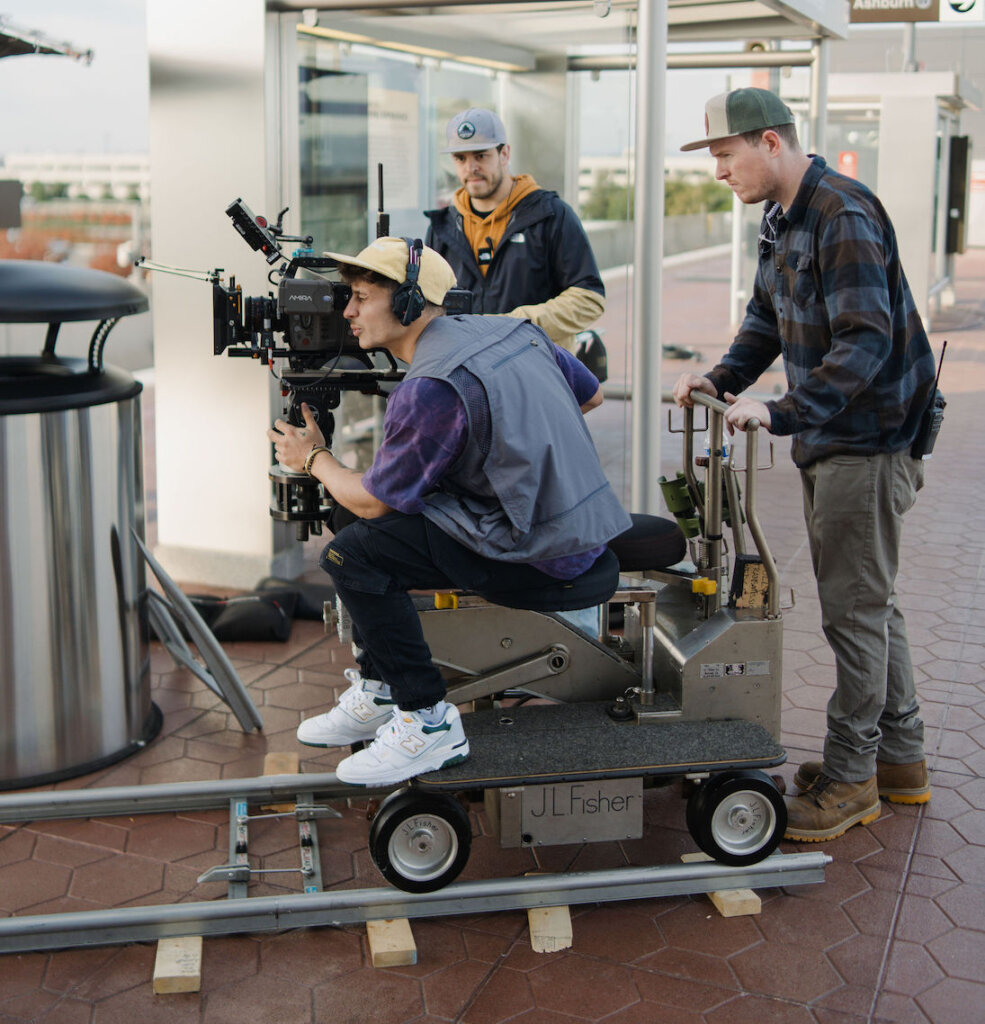
What keeps you motivated and creatively inspired?
To start, one of my biggest motivators in life started about 10 years ago when I met my current fiancé. We met in high school and we’re getting married in a few months. But family and being someone who can be a provider and supporter is really important to me. So on the business side of things, my current family of just her and I, and my future family with kids, is a huge motivator for me—to do everything I can to set us up for a future that we both dream of and want to raise our kids in.
On a creative side, I continually get inspired by the idea of what is possible within this visual space. Each project that comes my way has its own quirks and challenges that always keep me on my feet and determined to produce the best product possible. And when I say product, I mean image on the screen. And that image is not just my doing. There are so many people at play to make that image look the way it does. So, collaborating with people has been another huge inspiration to me. I love going to set knowing that I’m going to be surrounded by a bunch of my friends and like-minded people who are all there to do their best work. So in recap, I think that continual challenges and collaboration is what keeps me inspired.
On the YouTube side of things. I find motivation to be almost not that important. Because YouTube is so difficult, I think it’s harder than being a DP in some regards. Being as consistent as you can while always providing great value and quality can be draining and exhausting. I’ve felt burnt out a ton but discipline is usually what keeps me going. It’s discipline that gets me to set up a talking head and speak, it’s what gets me to brainstorm ideas and video topics. And the reason I have discipline for YouTube is because of the value I know it provides to so many people around the world. Just going through the comment section every so often you can see that the message you are trying to put out there is hitting home with people. It’s making a difference in their life, especially in some of my videos where I am very vulnerable and share some of my failures and shortcomings. It’s the hardest thing I do—putting myself out there like that in front of thousands and thousands of people fully exposed. But I’ve seen the outcome of that. People feel heard, people feel seen and people feel like they’re not alone in their situation. Especially when it comes from someone who you may perceive as “successful.” So yeah, the people are really the driving force that keeps me going on YouTube.
What makes a story visually appealing? What role does music play in storytelling?
What makes a story visually appealing speaks to the importance of collaboration within different departments in filmmaking. As a cinematographer, I am aware that a lot of the glory and admiration lands on us when a beautiful image is created. When in fact, so many other aspects go into making that image look a certain way, starting off with casting. Casting the right person for the role is huge, not only appearance wise but acting as well.
To tie into the acting, hair and makeup can completely transform the look of a person depending on the story, but it can also do something so simple as reduce the shine on someone’s forehead to prevent distraction. Wardrobe is, in my opinion, extremely underrated. You can put a person in a scene in a white t-shirt and it feels meh. But take that same person, same location, same time and lighting but with a thoughtful outfit and color scheme and instantly, 100% improvement and difference in the image.
Next is production design—the world builder. A cinematographer’s best friend is the production designer and art department. They are the ones who are building and adjusting the world you are shooting in. This involves wall color, wall texture, practice fixtures, artwork, furniture, plants, and so much more. In terms of cinematography, I feel it is our job to showcase the work of all these departments in the best way possible. That includes composition—how we frame the scene to direct the viewer’s attention in a specific way. Color palette—in collaboration with the other departments, finding the right color tones that feel cohesive and can evoke emotion and symbolism. Lighting— what type of mood does this scene call for: sunrise, mid day, night, dark, bright? Lighting is truly the gateway into bringing the viewer into the world we created. Camera position, lensing and movement—choosing the right camera lens is important in determining how you want the visuals to feel aesthetically. Camera movement can either be a distraction or a way to enhance the viewers experience, so choosing when and when not to move the camera is extremely important. And lastly, VFX is a very common tool used to add enhancements to the scene that cannot be done practically but can completely bring the world you are creating to life.
All of these aspects of filmmaking are what make the visual world appealing, but have you ever watched a movie without sound on? Its doable but definitely not ideal. The job of a composer or finding the right music is crucial to be able to match the emotion the scene calls for. It can enhance the visuals just by a single note on a piano. So in essence, what makes a story visually appealing is every single department working in conjunction with one another to make the best possible story.
What elements do you think are essential for crafting a compelling story?
Similar to the previous question, all of those elements are crucial to crafting a compelling story. But what attracts me to a story is how much I can relate to the characters, theme and story structure. As a DP, I have shot one feature film and multiple short films. And truthfully I have turned down over a dozen projects in the last few months due to the fact that I couldn’t find myself in a single aspect of the story. For me to do my job the best that I can, I feel that there has to be a sense of relatability within the story for me to grasp onto. For a viewer, especially in today’s world, I feel that pacing is a huge component to writing and storytelling that can either make or break a story. I am not saying that every film, commercial, music video has to be TikTok speed but I do think it’s important to have a story that makes you feel like you’re on a bit of a rollercoaster. You are introduced to conflict in the story—how does the dialogue, cinematography bring you to a fulfilling resolution? I think in the commercial world it’s a different animal when trying to capture the attention of a viewer within 30 seconds. So much of commercials really lies within the first five seconds of the ad. Similar to narrative, can you get an emotional response immediately? Is it creative, original, and innovative in its approach to selling that product or service? Something that I’ve noticed is that a great commercial not only catches your attention in the moment, but you tend to remember it afterwards.
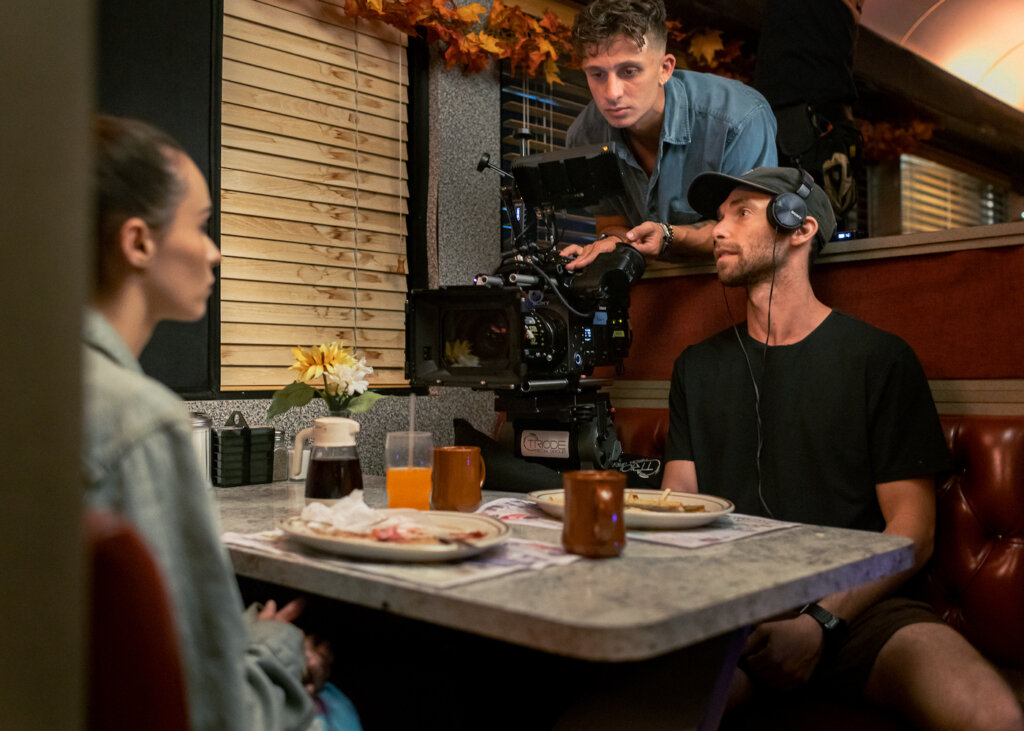
How important is music in your work?
As a traditional DP, I rarely work in post production so music isn’t something I deal with very often. But on the YouTube side of things, and personal projects music plays a huge role in my creation process. For me, music is one of the most important aspects to telling a story. You can have the same sequence but have two different background tracks that tell a whole different story. That is amazing to me. And sometimes, the lack of music is also just as impactful. I have seen many movies who rarely use music but only when specific things happen so it drives that emotion ever harder because of infrequent that story is driven by music. As someone who regularly creates content on YouTube, I have developed a sort of style for myself that includes very chill music. I’d say 90% of my videos are that lofi hip-hop style music that represents who I am and what I want to share with the world. I think it’s really awesome to see different creators music choices for their videos. It’s almost like seeing their personality.
What advice would you give other filmmakers/creators who are just starting their careers?
Be obsessed. To truly be successful in this industry, you have to be obsessed. From a working DP’s perspective, I believe the only reason I have done the work that I have been able to is because I am truly obsessed with cinematography. I am obsessed with lighting. I am obsessed with trying to create the best looking images as I can. Obsession comes with sacrifice, especially when it comes to family and social life. I think what’s important is understanding that filmmaking and being a creator isn’t everything. Finding time for your family and friends is so important and time away from creating can help reduce the potential for burnout. That is something that I have struggled with doing YouTube specifically. I tried creating a new video every week and after a while I just started feeling burnt out and a lack of creativity. So taking some time away isn’t necessarily a bad thing.
On a creative note, I think something that I would say to someone getting started is to always be curious. Never stop learning and being a student, regardless of your status in the industry. The people who stop learning and growing are the ones who fall behind. With curiosity comes challenges. It is also equally important to challenge yourself to try new things, meet new people, network, or even start a YouTube channel and put yourself out there in the world. I hear it from people all the time: YouTube is too saturated. True, but there is always room for a new unique voice, so don’t ever feel intimidated to start because you don’t think you have a place here. You do.
How do you find the balance between pushing boundaries creatively and delivering what your client wants or audience wants to see?
This is an interesting question because if I were to have answered this last year or the year prior I would have a totally different response. I’m gonna speak more towards the DP side of things. Up until maybe last year, I had a huge realization. I constantly felt that the projects I were shooting just didn’t look great. I felt the creative was a little uninspiring, so I kinda just rolled along with that notion of if this is what I’m given, I’ll just do what I can. It’s such a bizzare mentality for a young aspiring DP. When I hit that moment of realization, everything seemed to change for me. I realized that a client’s expectation isn’t just for me to show up and do the bare minimum and get the job done. Granted, some are. But most of the time, no. Client expectations are them looking to you, the hired DP, to look at this creative approach and find as many ways as possible to make it as engaging, visually appealing and interesting as possible and within a certain budget. Once I realized that the reason the images weren’t looking too great was because I forgot that I’m the one that needs to steer the ship and challenge the creative to become something more—even if it’s 5% or 10% better. Pushing the boundaries goes hand in hand with client expectations.
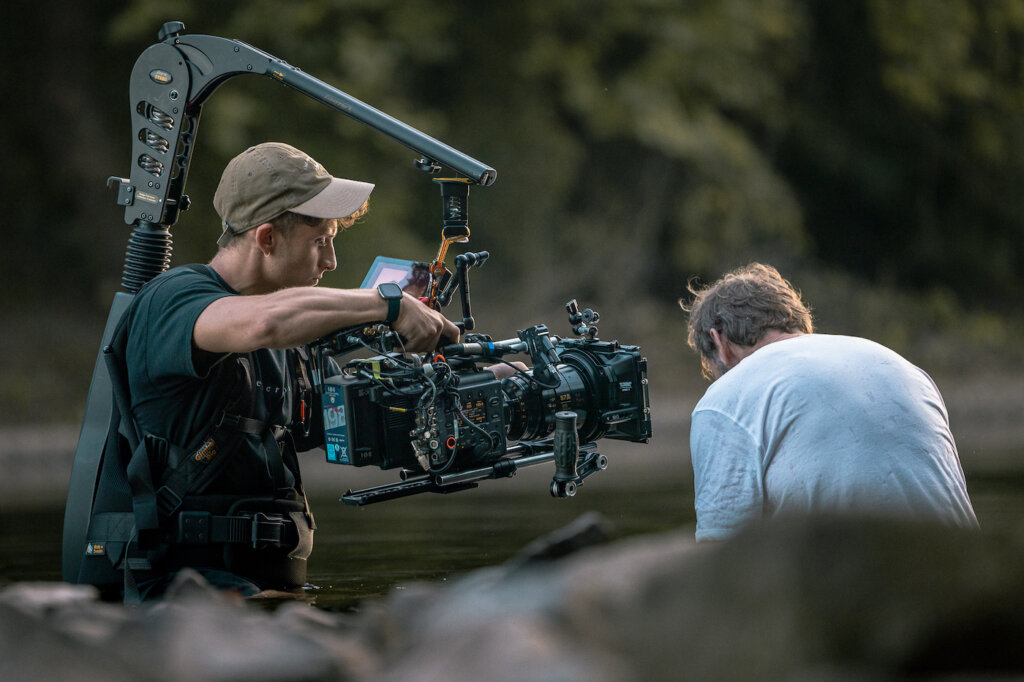
What is the most challenging aspect of being a filmmaker/creative?
One of the most challenging aspects of being a filmmaker/creative probably has to do with the idea that your next piece of work has to be better than the last—a consistent, neverending hunger for something more. We live in a time where social media is constantly promoting new work, and as a result makes a lot of us creatives feel the need to keep up or we will be left in the dust. I’m guilty of having this mentality often. If I am not posting new work, will I even be relevant anymore? Social media is a new tool that we are all trying to figure out still and in my experience, Instagram specifically, has two emotional meanings to me. First, when I am busy and feeling good, Instagram serves as a source of inspiration. But on the other hand, if i am not being booked and I feel like I’m in a rut, Instagram is this dark place that produces a lot of envy. A lot of people I talk to experience this struggle as well. Something that usually can help keep me grounded is reminding myself that where I am now, is where myself one year ago would dream of. This helps remind me that I am in my own place in time and not to worry about another’s journey.
As a DP, something I battle daily is usually budgetary restrictions paired with a creative approach that doesn’t align with the money we’re given. But that is a part of filmmaking that is never going to change. It is easy to complain about the budget and do nothing about it. But as a DP, I think part of our job is to work within the sandbox we are given and do whatever we can to get the project as close as possible to the intended outcome, if not better, by collaborating with your team and figuring out creative solutions to make it happen. And that doesn’t always mean doing things the cheap way. Sometimes it may be utilizing a different tool that may give us the same “feeling” as the other technique, but within the limitations this is how we can still accomplish this feeling. It is also important to have discussions with production about the reality of what can and cannot be done. The worst thing you can do is tell production that you can do something but in reality you know it is not possible and when you cannot deliver on that promise, it becomes an issue. So be truthful, honest and layout all the cards on the table up front, in prep to ensure a smooth and successful production.
What’s your favorite project that you’ve worked on? or What are some of your favorite projects you’ve worked on?
To date, my favorite project has been working the feature film I Think I’m Sick by Danny Gevirtz. This was my first time being a part of a project that had this much length. As a DP, it challenged me beyond anything I have ever done before. I am very used to commercials where the shots can be fairly stylized, continuity isn’t as important and usually, were selling something so we have to make it look “pretty.” The most challenging aspect of shooting a feature is ensuring that every scene still feels like it’s a part of the same movie. Maintaining a visual language throughout the film was something that was really new to me but got me very excited. I started to feel a deeper connection with the story by not only making it look “good,” but deciding how how to make it look the way it’s supposed to for this particular film. It was also a really unique experience for me because Danny was my mentor maybe 4-5 years ago when I was starting in this industry. He was the one who taught me the fundamentals of cinematography. And to now be the DP who shot his feature film, it was a beautiful full-circle moment.
Another favorite project of mine was a spec project for a vinyl company, Victrola. This was created (thanks to Musicbed) with my buddy Colin Tunney who is an amazing director from New Jersey. We’ve worked together on numerous projects, mostly music videos, but he came to me and said he wanted to get more into the commercial space, which just so happened to be at the exact time I was thinking of doing this project. So together, we created this spec commercial. It was fun creating three different worlds within the same living room. The story line is essentially the main character bringing home a new record, and as she is about to place it down she gets these flashbacks or future moments into her head, that we cut to. The first is a dancing scene with two of her friends and the other is another dancing scene with her boyfriend. Then she places the record down and enjoys the music. We brought a great team along on this project and really had a great time making it.
How do you search for music on Musicbed? What are some tips that you’d give other filmmakers to search on Musicbed?
Having used Musicbed for a few years now, I always result in selecting individual attributes, genres, and moods for the songs I am searching for. And every time, I find exactly what I am looking for. Not sure how they do it, but understanding the feeling and tone of the song you are searching for is easily translatable to their selection tabs. If I am unsure what I am looking for, their playlists are actually quite good and even if I don’t find an exact song within a playlist, I will usually find an artist that I like and can start digging into their previous work. Another great trick would be finding an artist or song you like and looking under the “Similar Artists” or “Similar Songs”. It can be a great way to find new tracks or artists within that genre to help you find the right song.
Why do you utilize Musicbed in your work?
I utilize Musicbed in my work because it is truly just good music. The amount of songs and artists that you can choose from is seemingly unlimited. And these artists aren’t just nameless and faceless people. They are real, industry working artists who produce some of the best music available. And to be able to have access to this music to use in your videos is unbelievable. I have also just gotten so accustomed to the system and platform. It is so easy for me to find exactly what I am looking for. But at the same time, if I am unsure what I want, there are plenty of ways to find new music with playlists for genre and mood, and artist/filmmaker playlists.
Explore a curated playlist of Carlo’s favorite songs to use in his work—available to license only on Musicbed.


